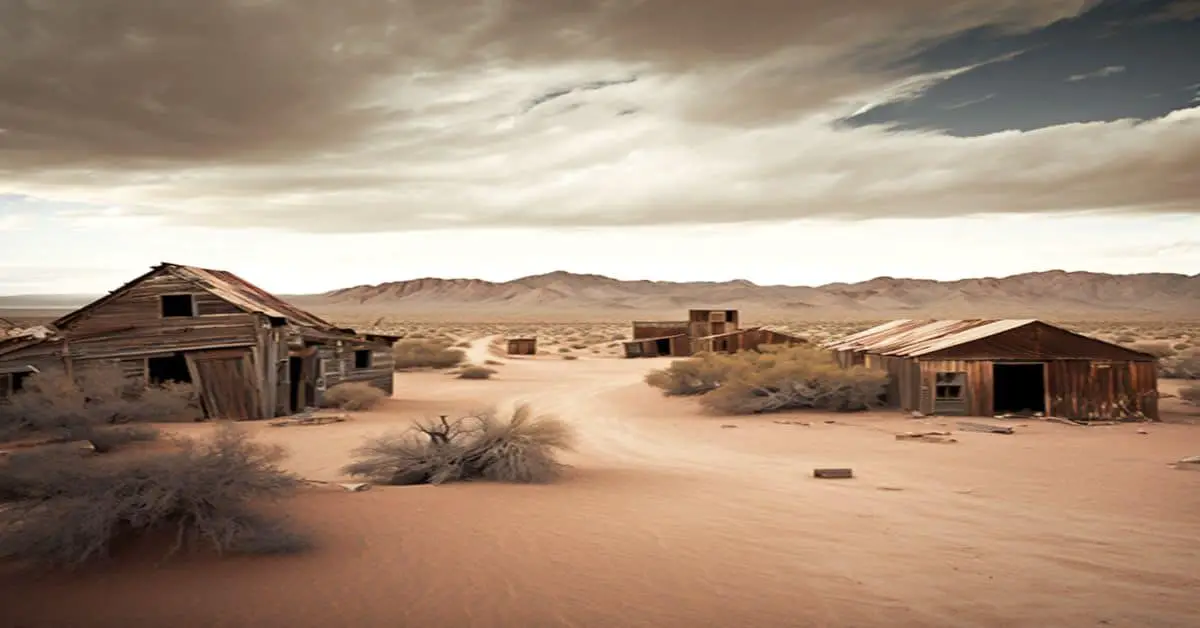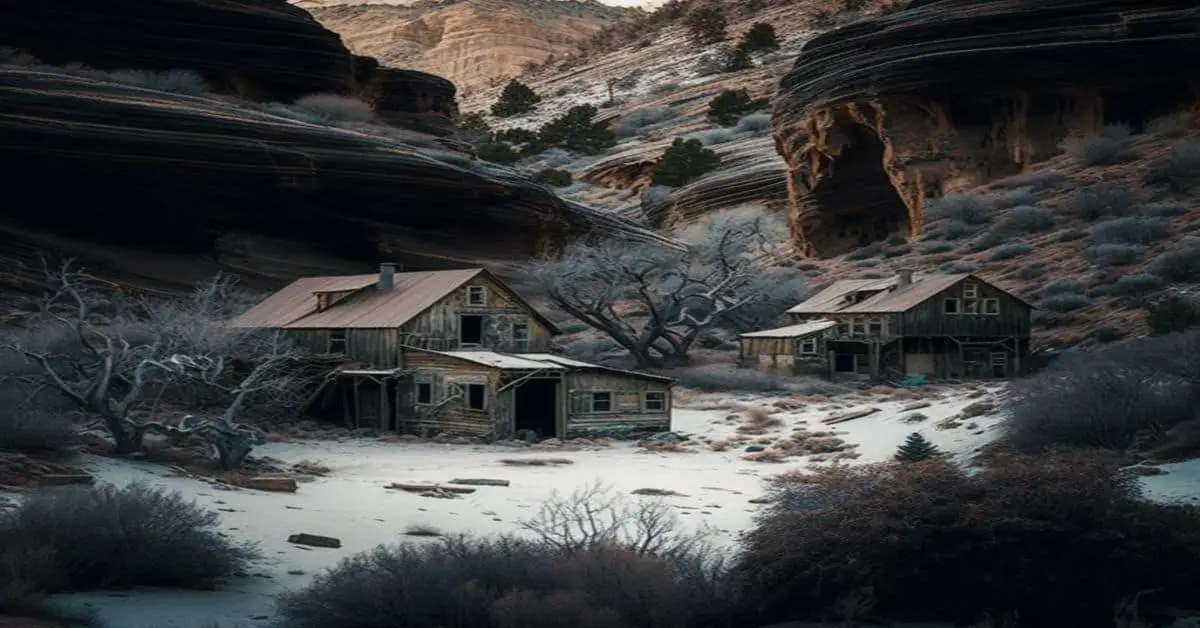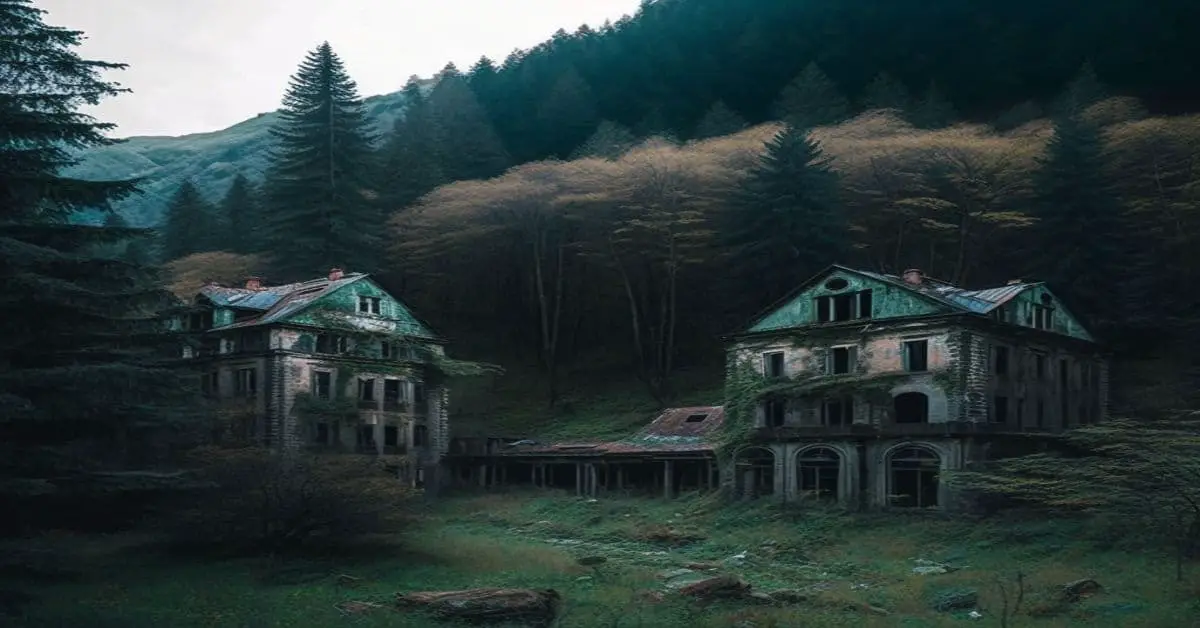Located in California’s remote desert landscape, Skidoo is a ghost town that once thrived with a population of over 500 residents in the early 1900s. Founded in 1906, Skidoo was established as a mining town following prospectors’ discovery of gold-bearing ledges. The town grew rapidly and soon boasted a post office, stagecoach line, and even its own newspaper. However, by 1915, the once-booming community was in decline, and today, no structures remain except for the ruins of the stamp mill and a few graves.
Despite the town’s demise, Skidoo’s history remains a fascinating topic of study for those interested in the American West and its frontier past. Discovering Skidoo: California’s Haunting Ghost Town offers a glimpse into the town’s history, people living there, and infrastructure. Through this article, readers can gain a deeper understanding of Skidoo’s rise and fall and learn about the unique challenges faced by those who lived and worked in the town during its heyday.
Join us on a journey to explore the haunting ruins of Skidoo and discover the secrets of this once-thriving community.
Key Takeaways
- Skidoo was a gold mining town with more than 500 residents at its peak, but became a dying town by 1915.
- The town had a stamp mill, street grid, and stagecoach line, but no structures remain today except for the ruins of the stamp mill and a few graves.
- Skidoo was home to the Gold Seal Saloon where Joe Simpson, the victim of California’s last lynching, was a co-owner.
- Dr. McDonald, a physician in employ of the Skidoo Mines Company, exhumed Simpson’s body and conducted an autopsy to inspect the effects of syphilis on the brain, then boiled the flesh off Simpson’s skull and kept it as a curiosity.
Location and History
Skidoo, a ghost town in California, was formed in 1906 around gold-bearing ledges discovered by two prospectors. The town had a post office that opened the same year, and by 1907, it had more than 500 residents. The gold rush in Skidoo was booming, and one mine produced 1.5 million in gold by 1917. Skidoo had a Justice of the Peace named Frank G. Thisse who presided over the town’s legal affairs. The Skidoo News was published on February 1, 1907, documenting the town’s growth and development.
Exploring the abandoned ruins of Skidoo offers a glimpse into its gold rush era, and the mysteries surrounding its decline. The town was a bustling hub of activity in the early 1900s, with a street grid that can still be faintly seen in historical photos. Skidoo had a stagecoach line that connected it to many Death Valley area locations, and a water pipeline located about 10 miles south of Skidoo in Nemo Canyon.
“Skidoo Ghost Town & Mill, located near Emigrant Canyon in the Panamint mountain range above Death Valley, California, is an old California gold rush ghost town. The hills around Skidoo Ghost Town & Mill have around 1,000 abandoned mines along with the remains of iron machinery, wooden cabins, old rusting cars and other odds and ends from the mining era.”
https://lasvegasareatrails.com/skidoo-ghost-town-death-valley-california/
Today, only the stamp mill ruins and a few graves remain. Despite its decline, Skidoo remains an important part of California’s history, and its ruins are a testament to its past glory.
People and Infrastructure
The town’s population reached more than 500 residents within a year of the opening of the Skidoo post office in 1906, attesting to the town’s prosperity during its peak.
Skidoo had a stagecoach line that connected it to many locations in the Death Valley area.
The town’s street grid can still be faintly seen in historical photos, and exploring the ruins of the stamp mill and a few graves provides a unique window into the past.
Forgotten stories of notable residents, such as Joe Simpson, co-owner of the Gold Seal Saloon, who was the victim of California’s last lynching, can be discovered in Skidoo.
Aside from the stamp mill ruins, Skidoo had a line shack of the Skidoo water pipeline located about 10 miles south of the town in Nemo Canyon.
The Skidoo Mill Gear and Skidoo Mill are also ruins that can still be seen today.
Visitors can immerse themselves in the history of Skidoo by exploring the remaining infrastructure and imagining what life was like for the miners and residents who once called the town home.
Miscellaneous Facts
One interesting aspect of the history of this former mining community are the forgotten stories of its people.
Skidoo’s notorious past includes the lynching of Joe Simpson, co-owner of the Gold Seal Saloon, which was California’s last lynching.
However, it was the autopsy conducted on Simpson’s brain by Dr. McDonald, a physician in employ of the Skidoo Mines Company, that adds to the haunting mysteries of the town.
McDonald exhumed Simpson’s body and opened his skull to inspect the effects of syphilis on the brain. He even boiled the flesh off the skull and kept it as a curiosity.
Exploring legends and uncovering mysteries is a fascinating aspect of Skidoo’s history.
The town’s Gold Seal Saloon was a popular spot for miners who worked hard in the nearby mines, and the meal tickets issued by the Skidoo Mines Co. are a reminder of the daily lives of the town’s inhabitants.
Despite the fact that no structures remain in Skidoo today, the shadows of the past can still be seen through the ruins of the stamp mill and a few graves.
Skidoo’s dark past, including the story of Joe Simpson and Dr. McDonald’s autopsy, adds to the eerie atmosphere of this California ghost town.
Frequently Asked Questions
What caused the decline of Skidoo as a town?
The decline of Skidoo as a town was caused by the financial instability of the mining industry. By 1915, the town was dying due to the exhaustion of gold resources, resulting in the abandonment of the town’s structures.
Are there any rumors or legends associated with Skidoo?
There are no credible reports of supernatural sightings or legends associated with Skidoo. However, notable visitors to the town during its heyday included prospectors John LeMoigne and Joe Simpson, who met a gruesome end as the victim of California’s last lynching.
What was the daily life like for residents of Skidoo?
Daily routines in Skidoo revolved around the mining industry, with many residents working long hours there. Social gatherings were limited, but the Gold Seal Saloon provided a place for residents to unwind and socialize.
Has Skidoo been used as a filming location for any movies or TV shows?
Skidoo has been used as a filming location for movies such as the 1920 silent film, “The Toll Gate,” and the 1955 Western film, “The Kentuckian.” It has also made famous appearances in TV shows like “Death Valley Days” and “Ghost Adventures.”
Are there any notable events or tragedies associated with Skidoo’s history?
Skidoo’s tragic past includes the lynching of Joe Simpson, and the exhumation and beheading of his body for a medical study. The haunting of Skidoo also includes supernatural stories of ghostly apparitions and eerie shadows.


